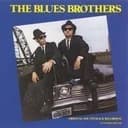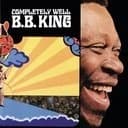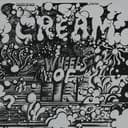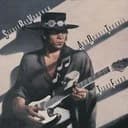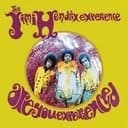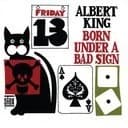The A♭ Blues Scale holds particular significance in jazz history due to the key's compatibility with horn instruments—the alto saxophone's concert pitch E♭ (fingered as C) makes A♭ tonalities fall naturally under the fingers when transposed. This technical convenience contributed to countless jazz standards being written in A♭ and related keys, from "Giant Steps" sections to bebop heads. The "blue note"—the ♭5 (D natural in A♭ blues)—represents a cross-cultural musical concept where African pitch flexibility meets European harmonic structure. Jazz musicians often approach this note with half-step slides from either direction, creating the microtonal inflections that distinguish authentic blues-jazz phrasing from purely diatonic playing. The tritone relationship between the root (A♭) and the ♭5 (D) creates compelling tension that can resolve either downward to the 4th (D♭) or upward to the 5th (E♭), giving improvisers multiple pathways for melodic development. This harmonic ambiguity, combined with the scale's inherent minor tonality from the ♭3 (C♭/B), allows for seamless movement between melancholic and triumphant emotional territories within a single phrase.
How to Use the Blues Scale
The A♭ Blues Scale excels in improvisation over jazz-blues progressions and provides a reliable framework for soloing over dominant seventh chord sequences. In a 12-bar blues in A♭ (A♭7-D♭7-A♭7-E♭7-D♭7-A♭7), the blues scale works universally across all three chords—the I7, IV7, and V7—making it remarkably forgiving for developing improvisers. Emphasize the blue note (D natural) by approaching it from the 4th (D♭) or 5th (E♭) and experiment with different rhythmic placements to create authentic jazz-blues vocabulary. In bebop contexts, combine the blues scale with chromatic passing tones and approach notes to create longer, more sophisticated melodic lines. The scale also functions effectively as a color option over minor seventh chords and altered dominant chords in modal jazz settings. For deeper harmonic integration, alternate between the A♭ Minor Pentatonic and the blues scale, using the ♭5 sparingly for emphasis rather than constant repetition. Jazz pianists can voice the scale's notes in the left hand as rootless chord shells (3rd and 7th) while improvising with the scale in the right hand, creating harmonically rich two-hand textures.
Blues Scale vs Minor Pentatonic
The A♭ Blues Scale and A♭ Minor Pentatonic Scale differ by exactly one note: the blues scale adds the ♭5 (D natural) to the pentatonic's five-note framework. The A♭ Minor Pentatonic contains A♭-C♭-D♭-E♭-G♭, while the blues scale inserts D between D♭ and E♭, yielding A♭-C♭-D♭-D-E♭-G♭. This chromatic addition fundamentally alters the scale's tonal character, transforming the minor pentatonic's stable, consonant sound into the blues scale's grittier, more harmonically complex palette. Jazz musicians frequently blur the distinction between these scales, treating the ♭5 as an optional chromatic embellishment rather than a structural requirement. The blues scale essentially functions as "minor pentatonic with chromatic spice," making it easy to incorporate into established pentatonic improvisational patterns. When practicing, establish fluency with the minor pentatonic foundation before gradually introducing the D natural, paying attention to how this single note creates tension against the surrounding diatonic tones and provides new melodic possibilities for resolution and phrase endings.
Common Blues Progressions
The A♭ Blues Scale navigates the traditional 12-bar blues form with exceptional versatility, making it indispensable for jazz combo and big band arrangements. The standard A♭ blues progression follows: A♭7 (4 bars) - D♭7 (2 bars) - A♭7 (2 bars) - E♭7 (1 bar) - D♭7 (1 bar) - A♭7 (2 bars). This I-IV-V movement (A♭7-D♭7-E♭7) underpins countless jazz blues heads, from straightforward shuffle grooves to sophisticated bebop contrafacts. The blues scale's notes relate harmonically to all three dominant chords, allowing continuous melodic flow without requiring scale changes through the progression. Beyond basic blues forms, explore the scale over jazz-blues variations that incorporate ii-V-I turnarounds (B♭m7-E♭7-A♭7), diminished passing chords, and tritone substitutions. Practice emphasizing chord tones (A♭, C♭, E♭, G♭) on downbeats while using the ♭5 (D) as a rhythmically displaced approach note to create syncopated bebop lines. The scale also functions over one-chord modal vamps on A♭7 or A♭m7, common in funk-jazz fusion and contemporary soul music. Understanding these harmonic contexts allows you to deploy the A♭ blues scale confidently across multiple jazz subgenres and related contemporary styles.
Famous Applications and Artists
The A♭ Blues Scale appears throughout jazz history due to the key's prevalence in horn-based arrangements and bebop standards. Cannonball Adderley's alto saxophone work frequently utilized A♭ blues vocabulary, blending gospel-influenced phrasing with hard bop harmonic sophistication. Pianists like Horace Silver and Wynton Kelly built entire solo choruses around blues scale patterns in A♭, demonstrating how minimal melodic material can generate maximum rhythmic and harmonic interest. In contemporary jazz, Robert Glasper's fusion of hip-hop and jazz often centers on A♭ grooves that draw from blues scale tonality. Beyond jazz, the scale appears in R&B and neo-soul contexts—D'Angelo and Erykah Badu's productions feature A♭ minor tonalities with prominent blue note inflections. Gospel keyboardists favor A♭ for its rich harmonic possibilities on the keyboard, using blues scale runs to connect between chord voicings. Understanding the A♭ blues scale connects you to this diverse musical lineage spanning jazz, gospel, and contemporary urban music, providing a foundation for authentic improvisation in these related traditions. The scale's six notes contain endless expressive possibilities when combined with proper rhythmic phrasing, dynamic articulation, and stylistic awareness.
